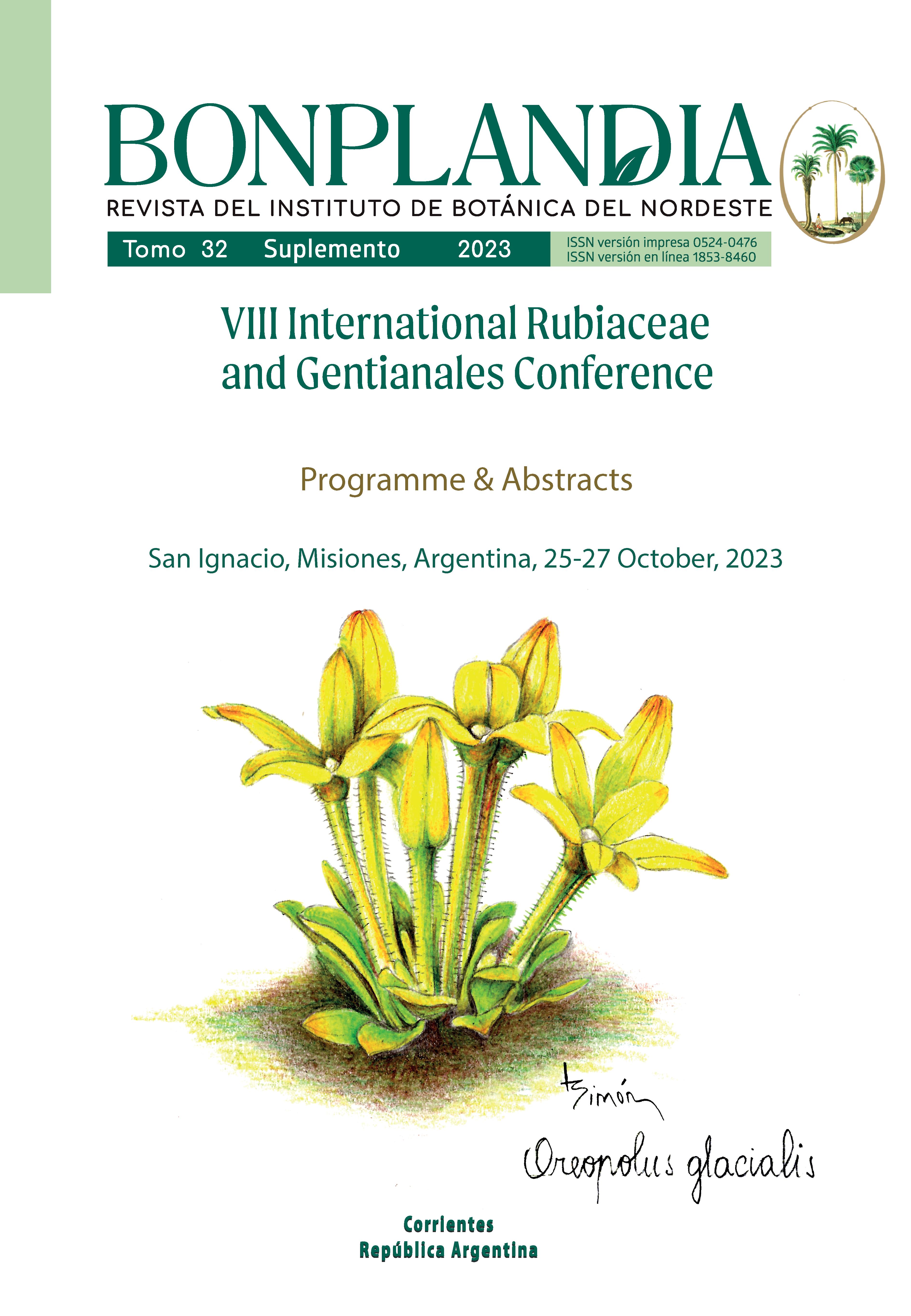The genus M alanea Aubl. (Rubiaceae, Guettardeae) in the Brazilian Amazon - species distribution and collection gaps
Resumen
The Brazilian Amazon is the largest and richest tropical forest in the world. However, its biodiversity is still underestimated and severely threatened by deforestation. Malanea Aubl. (Rubiaceae, Guettardeae) is a neotropical genus of about 40 species, 15 of which occur in Brazil. This study aims to present species distributions and gaps in collections ofthis genus in the Brazilian Amazon. We collected occurrence records in the online databases Herbário Virtual Reflora (http:// reflora.jbrj.gov.br/reflora/herbarioVirtual/) and Herbário Virtual da Flora e Fungos do Brasil (https://specieslink.net/). After sorting and cleaning, data were plotted in QGIS 3.28 software to visualize the distribution of species and collection sites. 167 records of 11 species (Malanea auyantepuiensis Steyerm .,M duckei Standl.,M egleri Steyerm., M. gabrielensis M üll.Arg.,M hypoleuca Steyerm., M. macrophylla Bartl. ex G riseb.,M microphylla Standl. ex Steyerm., M. obovata H orch.,M panurensis M üll.Arg.,M sarmentosa Aubl., a n d M subtruncata Steyerm.) were found in the Brazilian Amazon, with Malanea auyantepuiensis being a new record. Malanea macrophylla, M. gabrielensis, and M. sarmentosa have more than 30 records well distributed in the región. The other species have two to ten collections. The State o f Amazonas, with seven species registered, can be considered the center o f diversity o f the genus in the Brazilian Amazon. The región bordering the Guiana Shield has six species, M. egleri, M. hypoleuca, M. macrophylla, M. microphylla, M. obovata, and M. panurensis. We highlight a concentration o f collection points in regions cióse to urban centres. The low sampling o f most species limits systematics and biogeographic studies o f the genus. Therefore, we emphasize the need to expand the sampling o f Malanea in the Brazilian Amazon. Understanding the mechanisms that influence the lineage diversification process in the Amazon may allow us to anticipate and/or mitigate the loss of biodiversity in this domain.
Descargas
Descargas
Publicado
Cómo citar
Número
Sección
Licencia
Derechos de autor 2023 Bonplandia

Esta obra está bajo una licencia internacional Creative Commons Atribución 4.0.
Declaration of Adhesion to Open Access
- All contents of Bonplandia journal are available online, open to all and for free, before they are printed.
Copyright Notice
- Bonplandia magazine allows authors to retain their copyright without restrictions.
- The journal is under a Creative Commons Attribution 4.0 International license.











.jpg)


